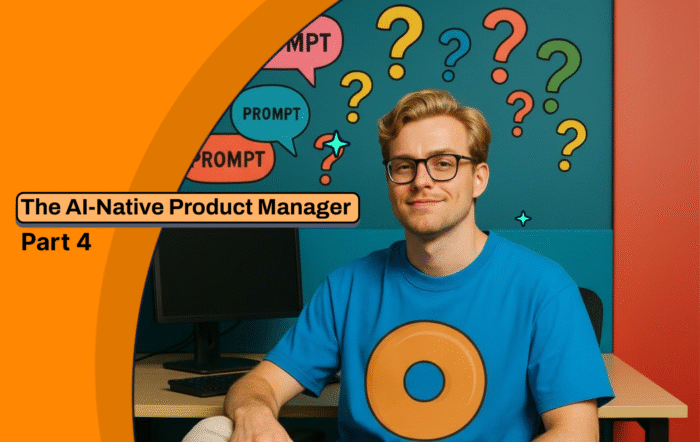When the news broke that Atlassian acquired Cycle, many product managers paused to reflect. The tool they trusted to organize discovery, gather feedback, and keep product work aligned had just changed hands.
Cycle helped teams create structure in early-stage product work. It offered a simple way to collect insights and keep a consistent rhythm between feedback and delivery. Now, with the acquisition, teams are wondering what will happen to their workflows and where to turn next.
The question is no longer about which tool replaces Cycle. The real question is how product teams continue making confident, data-informed decisions that deliver measurable impact.
What Product Teams Actually Need
Product managers have access to more customer data than ever before. Yet much of that data remains locked away in different tools. Feedback lives in Gong, tickets live in Zendesk, and customer conversations are buried in Slack or Salesforce notes.
The challenge is no longer the lack of information but the lack of connection between it all.
Teams need a clear way to view their customer reality without manual effort. They need to identify which issues are blocking revenue, which requests are linked to churn, and which opportunities are worth prioritizing. They need a shared foundation that turns evidence into action.
That is the real job to be done. Helping teams make choices that serve customers and drive business outcomes.
What Comes After Cycle
Product management has evolved. Teams no longer stop at collecting feedback. They want to understand the meaning and value behind every insight.
Modern teams are moving toward a model of continuous learning. They seek clarity that connects every decision to business results and customer satisfaction. This approach depends on visibility across Product, Success, Sales, and Marketing, supported by automation and trustworthy data.
Product discovery is becoming product intelligence. The next generation of tools will not just record what customers say, but show what those insights are worth.
Top Alternatives to Cycle
If your team is searching for tools to replace or build upon what Cycle offered, several platforms can support different parts of your product workflow. Each serves a specific type of team and goal.
🥯 Bagel AI: Built for Product Teams Focused on Impact
Bagel AI is the first AI-native product intelligence platform. It connects customer feedback, product data, and revenue context in one system.
By integrating with tools such as Salesforce, Zendesk, Gong, and Jira, Bagel identifies:
- Which product gaps are affecting deals
- How much revenue is tied to specific feature ideas
- Which customer issues influence churn or expansion
Bagel helps product managers quantify impact and make confident prioritization decisions.
Best for: Product teams that want to make decisions supported by data, customer context, and measurable results.
Productboard
Productboard offers a structured environment for feedback collection and roadmap planning. It is best suited for medium to large organizations that require broad collaboration. Teams should expect some manual setup to connect insights to revenue or GTM systems.
Dovetail
Dovetail specializes in qualitative research and analysis. It is ideal for teams that focus heavily on interviews, discovery, and understanding customer sentiment. While it offers strong organization and search capabilities, it is not directly connected to sales or financial data.
Aha!
Aha! provides a complete product management suite. It includes roadmap planning, idea portals, and reporting tools. Larger organizations appreciate its depth, though setup can take time for smaller or fast-moving teams.
Pendo
Pendo focuses on in-app engagement and user experience. It provides analytics, surveys, and guides that help teams understand user behavior. It is a valuable companion for measuring adoption but is not designed to link directly to revenue data or roadmap prioritization.
Cycle Alternatives at a Glance
| Tool | Best For | Setup Effort | Notable Strengths |
|---|---|---|---|
| Bagel AI | Connecting product decisions to customer and revenue impact | ✅ Easy | AI-native insights, integrates with any tool in your stack, quantifies roadmap impact automatically |
| Productboard | Enterprise feedback and prioritization | ⚠️ Medium | Feature prioritization, roadmap sharing, alignment for larger organizations |
| Aha! | Product roadmaps and idea collection | ⚠️ Medium | Full-suite product management with advanced planning and reporting |
| Pendo | Customer engagement and product experience | ⚠️ Medium | In-app guides, surveys, feedback forms, analytics, some roadmap visibility |
| Dovetail | Research repository and qualitative analysis | ⚠️ Medium | Organizes interviews and notes, strong tagging and search for discovery work |
Each tool plays a valuable role in the modern product stack. Bagel AI focuses on bridging the gap between customer insight, roadmap prioritization, and revenue results through purpose-built AI intelligence.
Bagel AI: Product Intelligence for Real Impact
Bagel AI helps teams connect product choices to real outcomes.
By analyzing data from GTM and customer tools, it reveals which features and ideas carry the most business value. Every request becomes measurable. Product managers can see which initiatives support customer satisfaction, retention, and growth.
Bagel’s AI engine provides context at every stage, helping teams act faster with clarity.
What Product Teams Gain with Bagel AI
| Product Challenge | Common Experience | What Changes with Bagel AI |
|---|---|---|
| Customer feedback stored across different tools | Teams struggle to connect insights | All feedback unified and categorized by topic and value |
| Roadmaps driven by assumptions | Prioritization based on opinions | Each idea linked to measurable customer and revenue impact |
| Misalignment between GTM and Product | Frequent meetings to share updates | Automatic updates within each team’s existing tools |
| Repeated pain points from customers | Issues resurface without visibility | AI identifies recurring patterns before they grow |
| Unclear business results after releases | Teams unsure of impact | Product outcomes tied directly to revenue and adoption |
Bagel AI helps teams replace uncertainty with evidence and shared understanding.
Why Teams Are Making the Shift
Teams that use Bagel AI move from reacting to data toward using it proactively.
A fintech company identified high-value blockers and closed half a million dollars in new deals within weeks. Another SaaS company reduced churn by 12 percent after grouping hidden feedback patterns surfaced by Bagel’s AI.
These outcomes reflect a common goal: building products that matter to customers and move the business forward.
The Moment for Product Teams
Cycle’s acquisition signals a shift in how teams work with data and customer feedback. Product managers are seeking clarity that supports faster, smarter decisions. They need a workspace that connects discovery, delivery, and measurable outcomes in one flow.
Bagel AI enables that connection. It brings customer evidence, revenue insights, and product direction together to make every decision count.
If your team is ready to move toward measurable impact and aligned product work, explore Bagel AI today.



